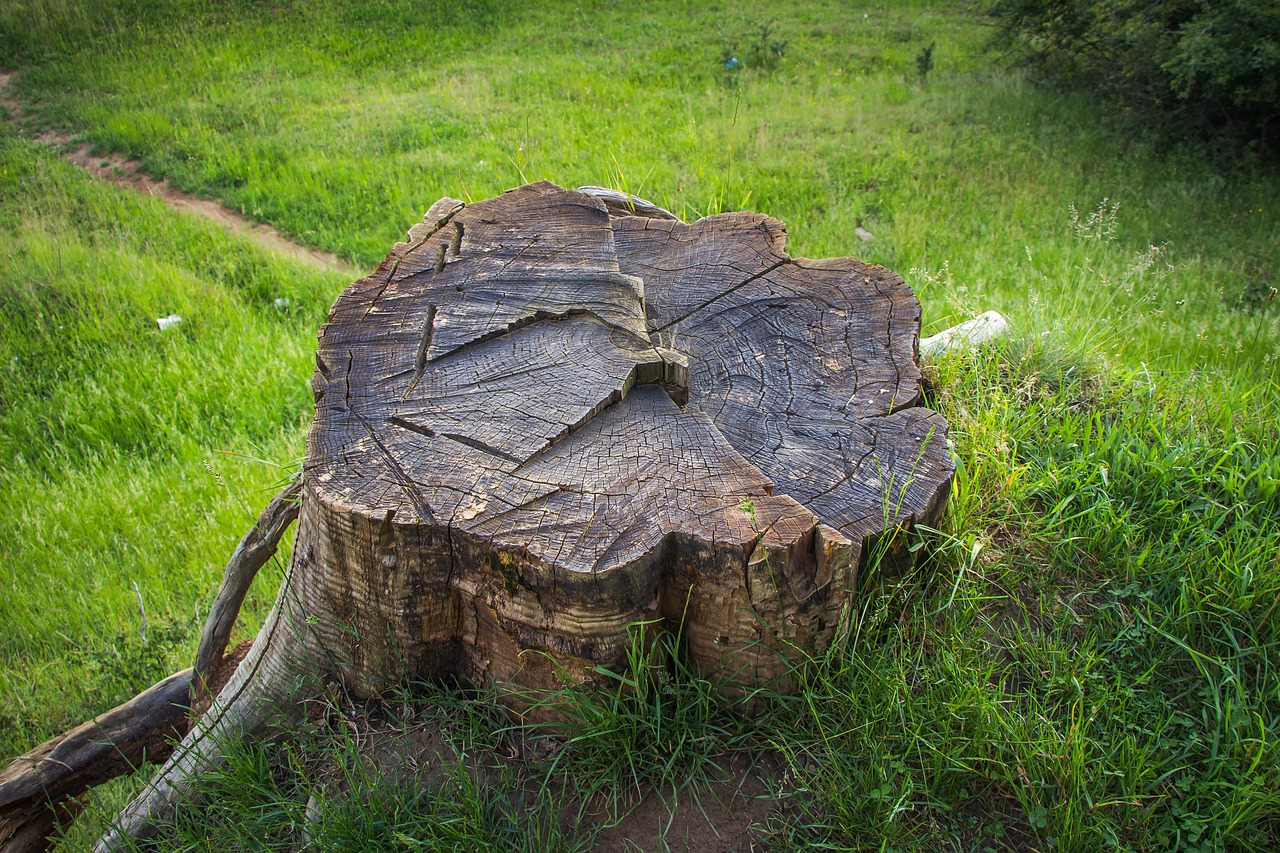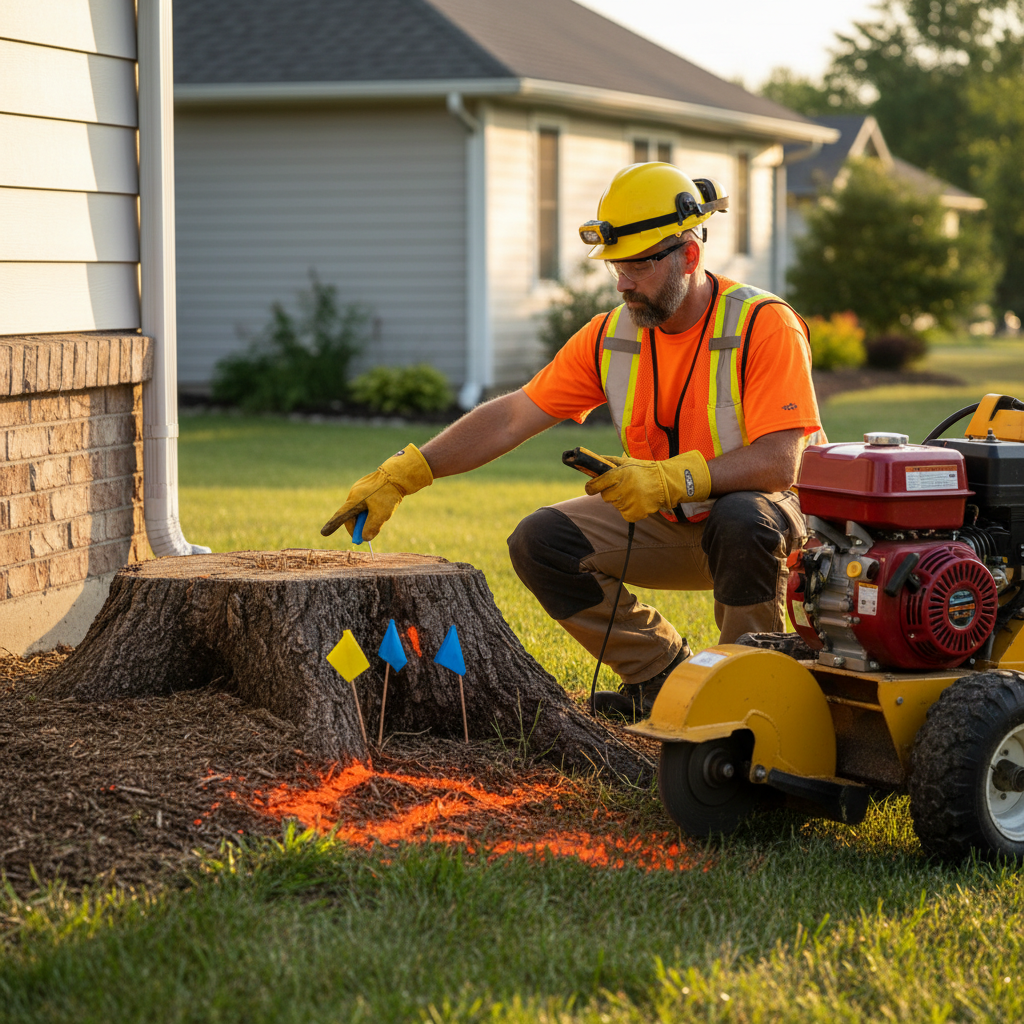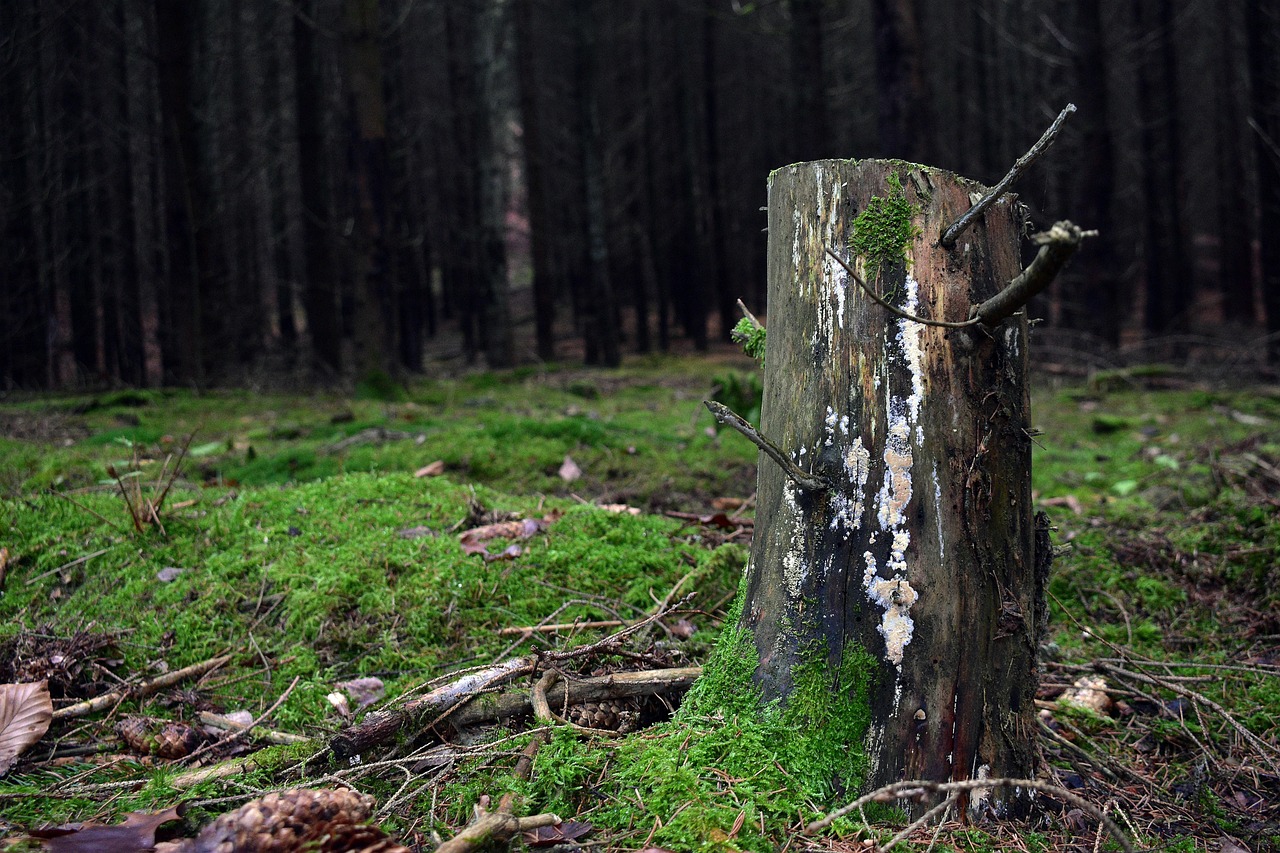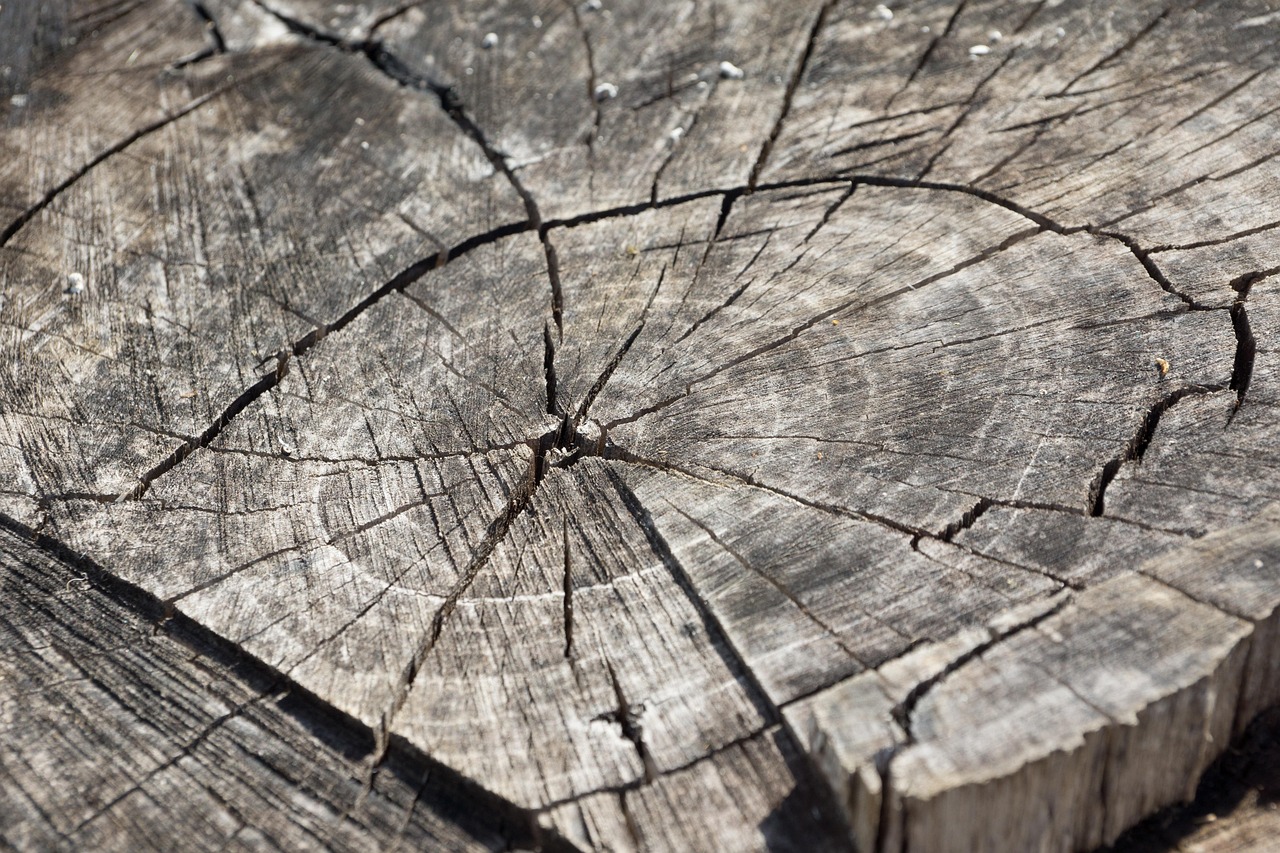TL;DR
- Always mark underground utilities before grinding
- Wear proper PPE including gloves, goggles, and sturdy footwear
- Keep children and pets away from the work area during the process
- Ensure proper cleanup to prevent tripping hazards after grinding
As a tree care expert, I emphasize safety above all when recommending stump grinding services or DIY projects. Stump grinding involves powerful machinery and potential hazards, making preparation and caution essential for homeowners. Whether hiring professionals or attempting DIY, understanding safety protocols prevents accidents and property damage.
Safety in stump grinding protects people, property, and the environment. Homeowners often overlook risks like flying debris, equipment operation, and site hazards. By following established safety guidelines, you ensure the job is completed safely and effectively. Let’s explore comprehensive safety measures for stump grinding.
Understanding Stump Grinding Hazards
Before starting any stump removal, identify potential dangers.
Equipment Risks
Powerful grinders pose serious injury risks if mishandled.
- Rotating Teeth: High-speed cutting wheels can cause severe lacerations
- Heavy Machinery: Walk-behind grinders weigh 200+ pounds
- Dust and Debris: Flying wood chips and airborne particles
- Noise Levels: Grinding produces loud noise that can damage hearing
Site and Environmental Hazards
Yard conditions create additional risks.
- Underground Utilities: Gas, water, electric lines under the stump
- Surface Obstacles: Rocks, toys, or furniture that can cause slips
- Root Systems: Hidden roots can destabilize the grinding machine
- Weather Conditions: Wet ground increases slipping risks
Biological Hazards
Stumps can harbor dangerous organisms.
- Insects: Termites, carpenter ants, or wasps nesting in decaying wood
- Fungi and Mold: Airborne spores during grinding
- Animal Habitats: Wildlife using stumps for shelter
- Toxic Wood: Certain tree species release harmful dust when ground
Site Preparation Safety
Prepare the work area to minimize risks.
Utility Marking
Always locate underground lines before any digging or grinding.
- Call 811: Free service marks utilities 48 hours in advance
- Private Lines: Mark sprinkler, septic, or private irrigation systems
- Marking Standards: Use colored flags or spray paint per utility codes
- Buffer Zones: Keep grinding away from marked lines by 18 inches
Area Clearing
Remove obstacles for safe machine access.
- Remove Debris: Clear rocks, branches, and loose items from 15-foot radius
- Protect Objects: Cover or move garden ornaments, vehicles, and furniture
- Pet and Child Safety: Keep family members away from work zone
- Surface Protection: Lay plywood under grinder for soft surfaces
Equipment Setup
Prepare the site for professional or rental equipment.
- Access Path: Ensure 3-4 foot wide clear path to each stump
- Working Space: 10-15 foot diameter around each stump for machine swing
- Power Sources: Extension cords or battery packs for lighting/tools
- Emergency Access: Maintain clear paths for emergency vehicles
Personal Protective Equipment (PPE)
Proper gear protects against common injuries.
Head and Eye Protection
Essential for preventing head and eye injuries.
- Hard Hats: Protect against falling branches or equipment
- Safety Goggles: Shield eyes from flying wood chips and dust
- Face Shields: Additional protection for grinding operations
- Hearing Protection: Ear plugs or muffs for noise reduction
Hand and Body Protection
Protect skin and limbs from sharp tools and debris.
- Heavy Gloves: Cut-resistant for handling branches and tools
- Long Clothing: Long pants and sleeves prevent skin abrasions
- Sturdy Boots: Steel-toed for foot protection against heavy loads
- Dust Masks: N95 or higher for airborne particle protection
Respiratory Protection
Guard against dust and fumes.
- Dust Masks: N95 for basic grinding dust
- Respirators: Higher filtration for chemical treatments or large jobs
- Ventilation: Work in well-ventilated areas, avoid enclosed spaces
- Dust Control: Use water spray or vacuum attachments on grinders
Safe Grinding Practices
Follow procedures to minimize risks during the process.
Professional Service Safety
When hiring pros, ensure they follow safety standards.
- Operator Certification: Ask for arborist or equipment training proof
- Site Assessment: Professionals evaluate risks before starting
- Utility Verification: Confirm 811 calls were made and lines marked
- Equipment Inspection: Ensure grinders are maintained and safe
DIY Grinding Safety
If renting equipment, prioritize safety training.
- Rental Instruction: Complete company training before operating
- Start Small: Practice on scrap wood before main stumps
- Depth Limits: Stay within recommended depths to avoid underground damage
- Machine Controls: Understand emergency stops and speed settings
Machine Operation Safety
Proper technique prevents accidents.
- Stability: Ensure firm footing when operating walk-behind grinders
- Pass Technique: Grind in controlled passes, never force the machine
- Depth Monitoring: Use depth indicators to avoid over-grinding
- Surrounding Awareness: Keep bystanders at least 50 feet away
Post-Grinding Safety
Ensure the site is safe after the work is done.
Site Inspection
Check for hazards immediately after grinding.
- Hole Hazards: Fill or mark holes to prevent tripping
- Chip Piles: Spread evenly to avoid uneven settling
- Root Stubs: Ensure all major roots are ground flush
- Equipment Debris: Remove metal shavings and small rocks
Cleanup Procedures
Proper cleanup prevents future accidents.
- Chip Management: Use as mulch or bag for disposal to avoid slips
- Hole Backfilling: Fill with soil in layers for stable ground
- Surface Leveling: Compact soil to prevent settling hazards
- Signage: Mark work areas if completion takes multiple days
Long-Term Maintenance
Prevent new hazards after stump removal.
- Grass Seeding: Cover bare areas to prevent erosion
- Soil Monitoring: Watch for settling over 1-2 weeks
- Plant Protection: Avoid planting in freshly ground areas immediately
- Professional Follow-Up: Schedule inspection for complete jobs
Emergency Preparedness
Be ready for unexpected issues during grinding.
First Aid Kit
Have supplies for minor injuries.
- Bandages and Antiseptic: For cuts and scrapes
- Eye Wash: For dust or small particle exposure
- Pain Relievers: For muscle strain from preparation work
- Emergency Numbers: Keep medical contacts handy
Emergency Contacts
Know who to call in case of accidents.
- Local Emergency: 911 for serious injuries
- Utility Companies: For immediate line damage concerns
- Service Provider: Have contractor’s emergency contact
- Poison Control: For chemical exposure incidents
Site Emergency Plans
Prepare for equipment or environmental issues.
- Fire Extinguishers: Ready for chemical burn methods
- Utility Locators: Emergency contacts for line strikes
- Neighbor Notification: Inform adjacent properties of noise
- Work Cancellation: Know when to stop for weather or safety
Safety for Different Stump Types
Adjust precautions based on stump characteristics.
Small Stump Safety
Less risk but still requires caution.
- Manual Methods: Shovels and axes require sharp tool handling
- Chemical Use: Proper ventilation for small chemical applications
- Burning Safety: Controlled burning in small areas still needs permits
Large Stump Safety
Higher risks with larger equipment.
- Heavy Equipment: Professional grinding recommended for large stumps
- Root Systems: Major roots require professional assessment
- Access Issues: Large stumps often have access challenges
Decayed Stump Safety
Rotten stumps have unique hazards.
- Structural Weakness: Unstable surfaces during grinding
- Pest Hazards: Insect disturbance during removal
- Dust Control: Rotten wood produces more airborne particles
Training and Education
Knowledge is the best safety tool.
Homeowner Training
Basic safety education for DIY or oversight.
- Online Resources: YouTube tutorials from reputable sources
- Rental Company Instruction: Mandatory for equipment use
- Professional Consultation: Ask pros about safe practices
- Safety Certifications: Consider basic arborist training courses
Professional Training Standards
Expect certified operators from services.
- Arborist Certification: ISA credentials for tree care knowledge
- Equipment Training: Manufacturer certification for grinders
- First Aid/CPR: Staff trained in emergency response
- Annual Refreshers: Ongoing safety education for teams
Safety Certification Programs
Recognized credentials indicate commitment.
- ISA Certified Arborist: Comprehensive tree care training
- TCIA Accreditation: Tree Care Industry Association standards
- OSHA Compliance: Occupational safety guidelines followed
- Local Safety Courses: Region-specific hazard training
Conclusion
Stump grinding safety protects homeowners, property, and professionals from common risks. As your tree care resource, I recommend professional services for most jobs due to the specialized equipment and expertise required. When DIY is appropriate, prioritize utility marking, PPE, and site preparation to minimize hazards.
Contact local stump grinding professionals through our directory for safe, efficient stump removal. With proper safety measures, your yard maintenance projects will be successful and injury-free.



